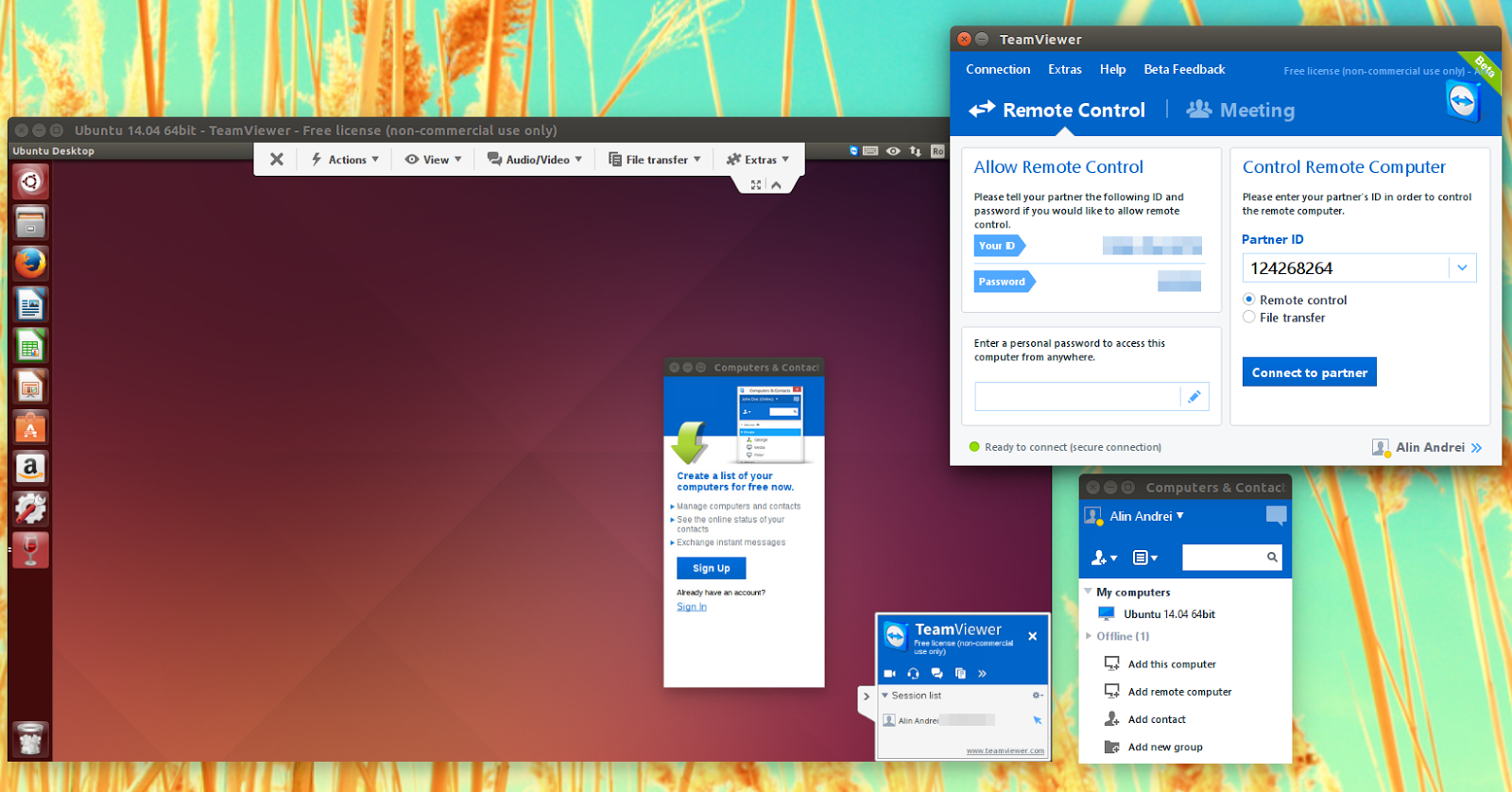

- #TEAMVIEWER DOWNLOAD LINUX HOW TO#
- #TEAMVIEWER DOWNLOAD LINUX INSTALL#
- #TEAMVIEWER DOWNLOAD LINUX ARCHIVE#
- #TEAMVIEWER DOWNLOAD LINUX VERIFICATION#
- #TEAMVIEWER DOWNLOAD LINUX PASSWORD#
You can also install TeamViewer on Ubuntu, Debian, CentOS, AlmaLinux 8 / Rocky Linux 8.
#TEAMVIEWER DOWNLOAD LINUX HOW TO#
We also covered how to run TeamViewer on openSUSE without installation. In this tutorial, we covered how to install TeamViewer on the openSUSE machine through the. It will remove TeamViewer from your openSUSE system. It may also prompt if you want to carry on the procedure.
#TEAMVIEWER DOWNLOAD LINUX PASSWORD#
Provide the sudo password when the Terminal prompts for it. Run this command in order to remove it from your system: $ sudo zypper remove teamviewer-suse You can uninstall TeamViewer from your openSUSE system anytime if you no longer want it.

If you want to find the version of TeamViewer installed on your machine, go to Help > About TeamViewer.Ī window will show up displaying the current version of TeamViewer. Now you can start using TeamViewer without installing it on your system. This will launch TeamViewer on your openSUSE system. Click “Continue” after checking the box at the bottom. Then the following License Agreement window will show up. Now use the command below to run the TeamViewer on your openSUSE system,: $. Then use the command below to move inside the TeamViewer directory: $ cd teamviewerĤ. In the output of the ls command on our system, you will see both the tar file “teamviewer_” and the extracted directory “teamviewer”.ģ. To verify if the tar file has extracted, run the ls command.
#TEAMVIEWER DOWNLOAD LINUX ARCHIVE#
Extract the downloaded archive through the command below: $ tar -xvf teamviewer*.tar.xzīefore extracting the tar file, ensure that you are in the same directory that includes the downloaded TeamViewer tar file. We have downloaded TeamViewer 64-bit package teamviewer_ on our system.Ģ. Run the command below in your openSUSE Terminal to download TeamViewer host: This method covers running the TeamViewer application on openSUSE using the tar package available at the TeamViewer official website. Method#2 Run TeamViewer without Installation

Then click the TeamViewer icon to launch it. Hit the super key and search for the TeamViewer application using the search bar at the top. You can open TeamViewer application from the Applications menu. In the output of the above command, you can see the version of TeamViewer.Ĥ. If you want to know the version of TeamViewer installed on your system, run the command below: $ teamviewer -version TeamViewer will then install on your openSUSE system.ģ.
#TEAMVIEWER DOWNLOAD LINUX VERIFICATION#
Also if you see any warning message like “Signature verification failed”, you can ignore this message by pressing i and then Return key. You can continue the installation by pressing the y and then Return key. rpm file.Īfter running the above command, it will display the installation details and then ask for confirmation. teamviewer-*.rpmīefore running the command above, ensure that you are in the same directory that includes the downloaded TeamViewer. Now in order to install TeamViewer on your openSUSE system, run the command below: $ sudo zypper install. We have downloaded TeamViewer 64-bit package teamviewer-suse.x86_64.rpm on our system.Ģ. Run the command below in your openSUSE Terminal to download the TeamViewer host: Run the command below in your openSUSE Terminal to download TeamViewer: You can also download TeamViewer through the Terminal using the commands below. Choose a 64-bit or 32-bit package depending on your OS architecture. Then download “TeamViewer” or “TeamViewer host” for openSUSE system. To download TeamViewer, visit TeamViewer official Downloads page for Linux. This method covers the installation of TeamViewer on openSUSE using the RPM package available at the TeamViewer official website.ġ. Method #1 Installing TeamViewer through RPM Note: You cannot install “TeamViewer” and “TeamViewer host” on the same machine at a time. You can use it on, Mac, Windows, and Linux. For non-commercial use, TeamViewer is free, however commercial use requires a cost-based license. This tutorial, explains how to install TeamViewer on openSUSE Leap 15.3. Some of the most used remote desktop applications include TeamViewer, AnyDesk, VNC, RealVNC, TigerVNC, Remmina. These applications let the helper access the remote system screen on their local systems as if they are actually sitting in front of their screens. Many users use these applications to remotely help their coworkers and family members manage their systems. Remote desktop applications allow users to remotely access and control other systems from anywhere and anytime.


 0 kommentar(er)
0 kommentar(er)
